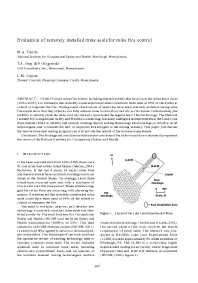Mining Publication: Evaluation of Remotely Installed Mine Seals for Mine Fire Control
Original creation date: June 2006
Of the 19 major mine fire events (including thermal events) that occurred during 2000-2005, it is estimated that remotely constructed mine seals could have been used at 65% of the events to control or suppress the fire. Underground observations of seals that have been remotely installed during mine fire events show that they often do not fully achieve mine roof-to-floor and rib-to-rib closure. Unfortunately, the inability to reliably close the mine void has limited or precluded the regular use of this technology. NIOSH is conducting full-scale underground experiments at its Lake Lynn Experimental Mine to identify and remedy existing shortcomings of remote sealing technology in order to develop novel technologies and to transfer the new or improved technologies to the mining industry. This paper discusses the remote mine seal testing program and provides the results of the in-mine experiments.
Authors: MA Trevits, TA Gray, P Glogowski, LM Crayne
Conference Paper - June 2006
NIOSHTIC2 Number: 20030319
Proceedings of the 11th U.S./North American Mine Ventilation Symposium, University Park, Pennsylvania, June 5-7, 2006. Mutmansky JM, Ramani RV. eds., London, U.K.: Taylor & Francis Group, 2006 Jun; :367-372
See Also
- Clearing the Air
- Comparison of Methods: Dynamic Versus Hydrostatic Testing of Mine Ventilation Seals
- Evaluation of the Bagged Stone Dust Barrier Effectiveness in a Bord and Pillar Mine
- Explosion Pressure Design Criteria for New Seals in U.S. Coal Mines
- Inflatable Partitions for High-Expansion Foam Generators
- Progress Toward Improved Engineering of Seals and Sealed Areas of Coal Mines
- Remote Mine Fire Suppression Technology
- Technical Solutions for Enhancements to Mine Safety Using Barricade II Fire Blocking Gel
- Testing and Evaluation of an Inflatable Temporary Ventilation Control Device
- Use of Rocsil® Foam to Remotely Construct Mine Seals
- Page last reviewed: 11/19/2015
- Page last updated: 11/19/2015
- Content source: National Institute for Occupational Safety and Health, Mining Program


 ShareCompartir
ShareCompartir
